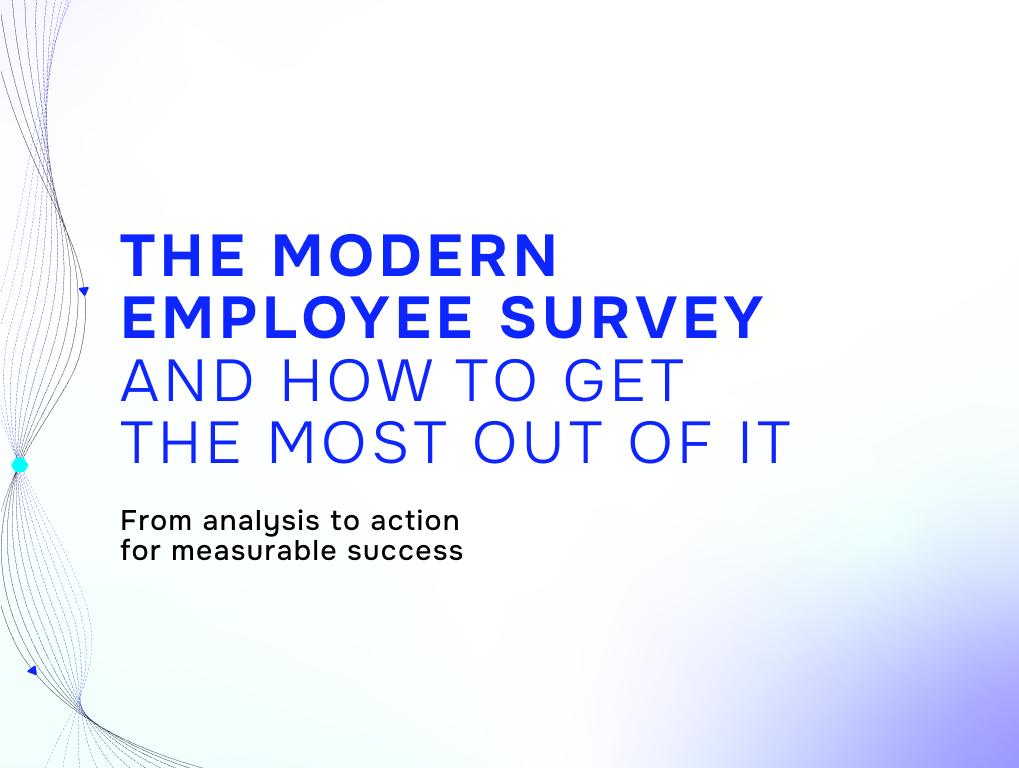For years, the annual employee review was the cornerstone of performance evaluation. Companies assumed that a single, comprehensive assessment per year was enough to foster talent and boost productivity. However, as workplace demands evolved, the need for fast, continuous feedback increased. Mainly because long waiting times slowed down both employee development and company progress.
Traditional annual performance reviews present the following challenges:
- Delayed Adaptation: Annual reviews provide feedback too long after the actual event, thus reducing its effectiveness.
- Lack of Agility: Modern work environments require quick response times and continuous adaptation.
- Low Acceptance: Employees often do not take late, outdated feedback seriously or perceive it as irrelevant.
The Evolution of Feedback: From Annual Surveys to Real-Time Insights
To stay competitive, companies are increasingly adopting continuous feedback models and acting in a data-driven and agile manner. In today’s world, new technologies and changes in the workplace have accelerated this development:
Real-time feedback apps, such as Slack integrations, enable spontaneous feedback directly in the workflow – without lengthy processes or formal meetings. This makes feedback faster, more precise, and more relevant to daily operations.
360-degree feedback fosters a collaborative feedback culture by including not only the perspective of managers but also that of colleagues and employees. This provides a more comprehensive picture of individual and team strengths as well as areas for improvement.
AI-powered sentiment analysis helps HR departments identify trends early by analyzing mood patterns from feedback and internal communication channels. This allows companies to proactively address challenges and implement targeted measures to improve employee retention and satisfaction.
With modern HR tools, companies can seamlessly integrate feedback into everyday work, automate feedback processes, and gain valuable insights through analytics. Organizations that embrace real-time feedback not only strengthen their workplace culture but also gain a long-term competitive edge.
Example: Netflix
Netflix is known for its culture of radical transparency and continuous feedback. Employees receive real-time feedback from colleagues and managers, seamlessly integrated into their daily work routine.
Results: Faster decision-making, higher employee engagement, and a culture of accountability.
The Science Behind Fast Feedback: Why It Works
Psychological Principles: Why Fast Feedback Is More Effective
- Learning Through Reinforcement: The “Instant Feedback Loop” is based on operant conditioning (Skinner, 1953). Immediate feedback reinforces desired behavior and corrects errors more quickly.
- Peak-End Rule (Kahneman, 1999): People particularly remember the most intense and recent moments of an experience. Immediate feedback enhances learning and retention.
Data-Driven Decision-Making
- Trend Analysis: Real-time feedback allows HR and managers to identify problems before they escalate.
- AI and People Analytics: Google uses AI-powered “Pulse Surveys” to continuously optimize the employee experience.
The Impact on Employee Engagement
- Gallup Study (2021): According to Gallup’s “State of the Global Workplace Report,” companies with continuous feedback experience 14% higher productivity and 30% lower turnover.
- Case Study: Microsoft implemented real-time feedback tools, leading to a significant increase in employee satisfaction.
Implementing Fast Feedback: Best Practices for HR
Success Factors
- Leverage Technology: Use tools like atwork to facilitate continuous feedback.
- Ensure Psychological Safety: Employees must feel safe giving honest feedback.
- Regular Check-Ins Instead of Annual Reviews: Agile companies prioritize monthly feedback cycles.
What Works Best for Different Organizations?
- Startups: Flat hierarchies and quick decision-making favor informal, direct feedback.
- Large Corporations: Structured feedback management, sentiment analysis, and anonymous surveys are important.
- Creative Industries: Peer feedback mechanisms and collaborative evaluation processes foster innovation.
Fast Feedback in Practice: Efficiency Through Real-Time Insights
Traditional annual reviews are losing relevance in the modern workplace. They are time-consuming, often provide delayed insights, and contribute little to immediate performance improvement. Companies are therefore increasingly adopting agile feedback systems that enable continuous, fast, and situational feedback.
Example: Adobe
Adobe moved away from traditional annual reviews and instead introduced regular “check-ins.” These short, structured conversations between employees and managers foster an open feedback culture, enable timely adjustments, and boost motivation.
Results: 30% lower employee turnover and a 10% increase in productivity (HR Examiner).
Example: IBM
IBM leverages AI-powered analytics to detect and reduce unconscious bias in performance evaluations. This leads to more objective assessments that support both individual employee development and a diverse, equitable corporate culture.
Read more about the key components of an HR report in our article “Making Fair and Fast Decisions with Automated HR Reports.”
The Future of Feedback: From Surveys to Predictive Insights
Workplace feedback is undergoing a major transformation. Instead of static surveys, AI-powered systems are being implemented to analyze patterns in real time and take proactive action.
Predictive Analytics & AI: Smart Feedback Systems
Personalized coaching recommendations and early warning systems make feedback proactive:
- Dynamic feedback loops adapt in real-time and provide concrete action recommendations.
- Early warning systems detect drops in motivation before they result in resignations.
From Centralized Surveys to Employee-Led Feedback
More and more companies are moving away from rigid, centralized feedback processes and embracing flexible, employee-driven models.
Spotify empowers employees to initiate their own feedback sessions, independent of fixed cycles. Employees regularly reflect on their work in retrospectives or peer feedback rounds, identifying specific areas for improvement. This agile model not only accelerates innovation but also strengthens team autonomy.
Google utilizes AI-driven prompts to encourage continuous feedback. The Project Oxygen study showed that real-time feedback is a key driver of leadership effectiveness. As a result, Google implemented real-time feedback tools that help managers and teams provide regular, constructive feedback. The outcome: higher job satisfaction, better employee retention, and more productive teams.
Conclusion: Fast Feedback as a Competitive Advantage
Practical experience shows that companies implementing continuous feedback benefit from higher employee satisfaction, faster decision-making, and increased productivity.
Success models from companies like Adobe, Microsoft, and Netflix demonstrate how agile feedback systems positively impact corporate culture and drive long-term success.
What Does This Mean for the Future?
Instead of static annual reviews and employee surveys that take place only once a year, companies need flexible, AI-powered solutions that:
- Enable personalized coaching
- Provide real-time insights
- Automate feedback processes
Organizations that invest early in modern feedback technologies will gain an innovation advantage and an increase in employee retention and performance.


